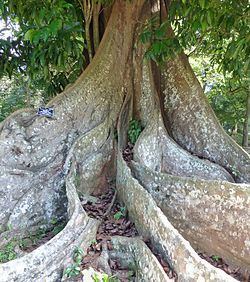Tribe Caesalpinieae Higher classification Moridae | Scientific name Mora Rank Genus | |
 | ||
Similar Eperua, Caesalpinieae, Chlorocardium rodiei, Goupia glabra, Dimorphandra | ||
Mora is a genus of large trees in the subfamily Caesalpinioideae of the legume family Fabaceae, (or in some classifications the family Caesalpinaceae of the order Fabales). There are seven to ten species, all native to lowland rainforests in northern South America, southern Central America and the southern Caribbean islands. These are large, heavily buttressed rainforest trees up to 130 feet (40 meters) in height (to 200 feet (61 meters) in the case of M. excelsa ). The genus is particularly noteworthy for the exceptional size of its beans, which are commonly acknowledged to be the largest known dicot seeds, in the instance of M megistosperma being up to seven inches (18 cm) in length, six inches (15 cm ) in breadth and three inches (8 cm)in thickness, and a weight of up to 2.2 pounds (1000 grams). The beans of Mora spp. are edible if boiled, and are also the source of a red dyestuff. The species M. excelsa is one of the few rainforest trees to grow in pure stands.
Some of the species are important for timber production. Mora excelsa and Mora gonggrijpii are also known as nato, and are commonly used in guitar body and neck construction.
